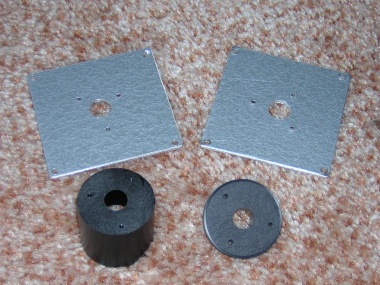
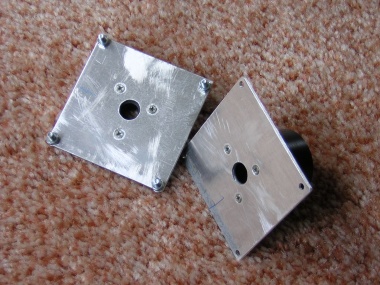
The Steve Mogg webcam adapter was cut just in front of the flange. Two aluminium plates were cut and holes drilled in the corners to allow them to be bolted together (These plates are 60mm square but they should have really been made slightly bigger to allow the grating to clear the corner screws and be slid in and out of the holder without dismantling it. A less maleable material eg printed circuit board might also be better to minimise flexure) Holes were drilled in the centre of the plates slightly larger than the Mogg adapter bore. (If any vignetting is seen, the upstream plate and adapter bore could be drilled out slightly larger.) The two plates and two halves of the adapter were aligned and clamped togther and three holes drilled through the adpater flange, plates and into the adapter cylinder. The holes in the parts of adapter were tapped and the holes in the plates enlarged to give clearance and countersunk
This shows the two parts of the adapter bolted to the plates
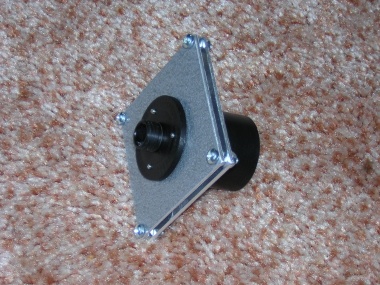
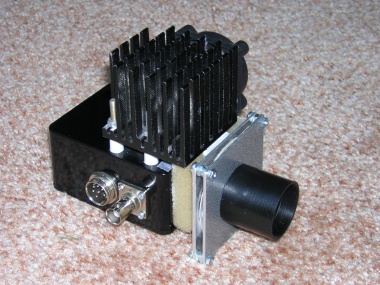
The two plates were bolted together with spacers to give clearance for the grating. Thin sheets of a compressible material were placed either side of the grating to protect it when clamped between the plates and to exclude light. (An alternative could be to make up a U shaped spacer to allow the grating to be slotted in. Some means of retaining it would be required and a light tight cover would be needed on the open side)
This shows the holder installed on the 1004x-JG camera. This set up gives a dispersion of approximately 30A/pixel (640 pixels across) with the 1004x CCD and lens holder.
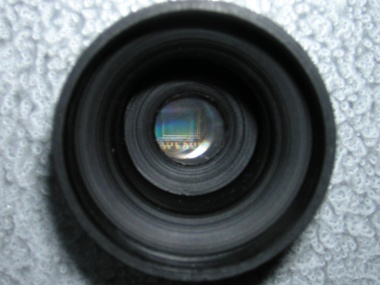
The zero and blazed first order images of the CCD can be seen here. The grating needs rotating slightly to make the spectrum dispacement exactly horizontal relative to the CCD. This makes processing of the spectrum image easier. It would also be a good idea to paint the edges of the plates matt black to avoid reflections by the looks!